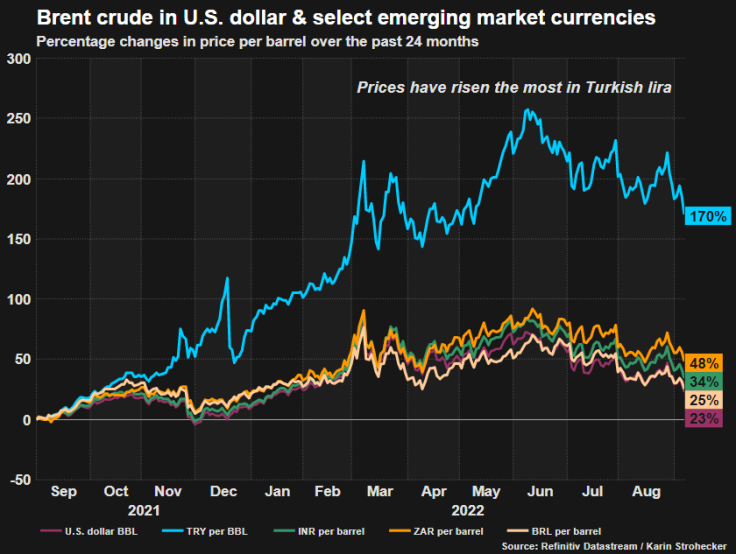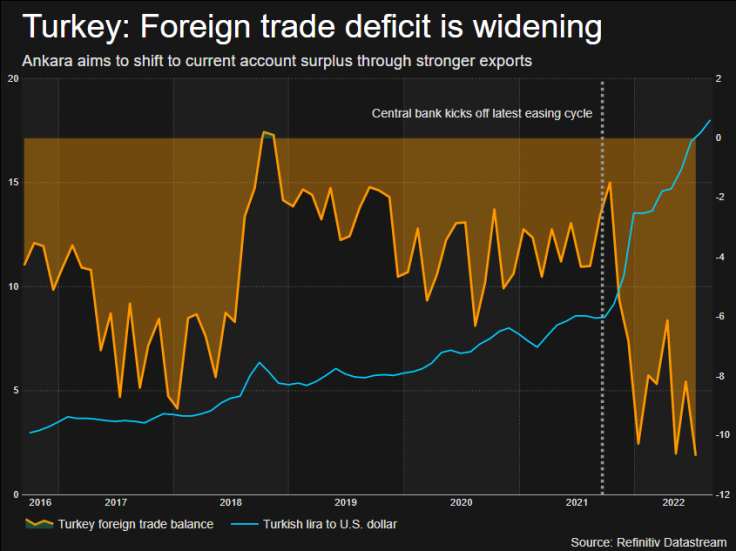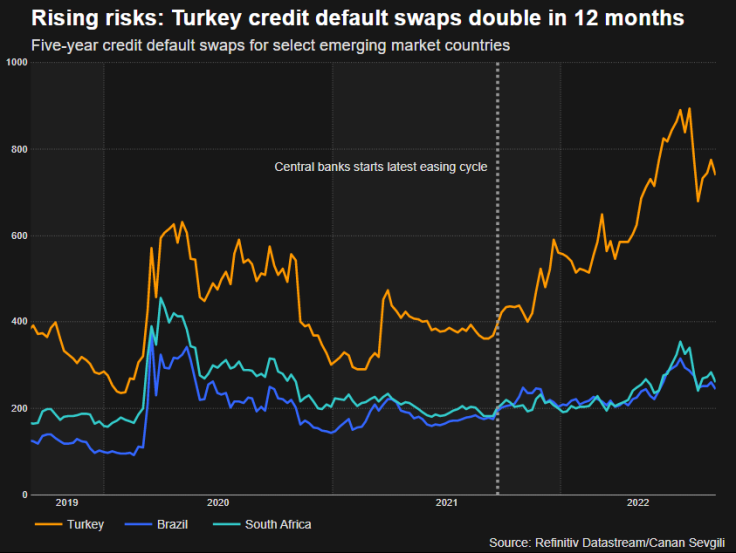Bearing The Scars: One Year Of Turkey's Unorthodox Easing Cycle
Nearly 12 months ago, Turkey's central bank embarked on a rate-cutting cycle in the face of soaring inflation, defying traditional monetary policy and running against a global trend of rising borrowing costs.
On September 23, 2021, policymakers started slashing the key interest rate, then at 19%. It now stands at 13% after the bank delivered another surprise cut in August - despite the monetary easing helping drive inflation above 80%.
President Tayyip Erdogan has urged the unorthodox policy in hopes of providing targeted cheap credit to boost exports and economic growth with the aim of creating a current account surplus.
Below are five charts showing effects of the monetary easing and ensuing lira crash:
TUMBLING LIRA
The cocktail of a weakening currency and rising inflation has long haunted Turkey - and cutting rates in the face of soaring inflation has brought back past ghosts.
Turkey's lira has tumbled 54% against dollar since the central bank embarked on its easing cycle last September, making it the worst-performing emerging market (EM) currency over that period. It is also vying for the worst performing EM currency with Argentina's peso and Ukraine hryvnia since the start of the year.
EM currencies over the past 12 months
COSTLY FOOD
Pandemic-related shutdowns had already stoked inflation, and that was exacerbated by Russia's invasion of Ukraine which raised energy and food prices.
This has been felt acutely in countries such as Turkey, which imports many grains and other foodstuffs, often from Russia.
In August, inflation in Turkey's key food and non-alcoholic beverages' segment soared 90.25% while overall annual inflation hit a fresh 24-year high of 80.21%, up from 19.25% in August last year.
Turkish food inflation tough to swallow
ENERGY PRICES
Turkey imports almost all its energy needs so its trade balance and import-related inflation rate is very sensitive to oil prices.
Brent crude futures have risen by nearly a quarter since last September, though that translates into a 170% jump when oil prices are calculated in Turkish lira - well above the hit other EM economies absorbed.
High oil prices also weigh on Turkey's current-account balance, potentially adding to further pressure on the lira.
Oil prices in select emerging market currencies

TRADE TROUBLE
Under an economic programme unveiled last year, Turkey aims to shift to a current account surplus through stronger exports, tourism income and low interest rates. But that target keeps slipping away due to soaring global energy and commodity prices.
Data showed that Turkey's foreign trade deficit surged nearly 150% year-on-year to $10.7 billion in July, data from the Turkish Statistical Institute showed.
Preliminary August data confirmed that trend, said Goldman Sachs, showing the trade deficit had widened again to $11.3 billion, compared to $4.3 billion in August last year. A global economic slowdown and expected recession in Europe will do little to ease the pain going forward, analysts said.
Turkey trade deficit

RISING RISKS
The cost of insuring exposure to Turkey's debt has risen sharply over the past 12 months as wider global market woes and risk aversion amplified concerns over Turkey's high inflation, sliding currency and deeply negative real interest rate.
The country's five-year credit default swaps (CDS) more than doubled to 742 basis points (bps) since September 1, 2021, data from S&P Global Market Intelligence shows.
Turkey CDS

© Copyright Thomson Reuters {{Year}}. All rights reserved.





















